What: The unveiling of the Cenotaph was the day's big news story. Here's how The Hongkong Daily Press reported it [1]:
Hongkong, united by many ties with the heart of the Empire, established another link yesterday when, with impressive ceremonial, the Colony's War Memorial - a replica of the Cenotaph in Whitehall, London, - was unveiled and dedicated to "The Glorious Dead".
This tribute to the Empire's dead occupies a position in Statue Square which has long been known as "the Colony's finest site", and is itself a worthy memorial - certainly a finer one than is possible in Whitehall. The Hongkong Memorial is rendered doubly impressive by reason of the ample space around it, its position near the water front and the fact it rests on a broad granite base approached by six steps, which leads to a dais approached by three more steps. The granite monument has no decoration beyond laurel wreaths carved in the stone, and the inscription "The Glorious Dead" with the date, 1919, in Roman figures. On either side three bronze flagstaffs project from the masonry and carry, on the centre flagstaff, the Union Jack, flanked by the White and the Red Ensign. The Cenotaph is 33 feet in height, and the base measures 18 ft. 6 inches by 8ft. 6 inches. Four approaches, kerbed and paved with granite, bisect the grass lawns beyond the Memorial.
As is generally known, Hongkong's tribute to those who died in the War is to include a Nursing Home to be erected at a cost of roughly a million dollars. The present memorial cost $60,000 exclusive of the site, which was dedicated to the purpose by the Government.
Among the large gathering present yesterday, seated in the temporary stands erected around the memorial, were to be noticed all the members of the Executive and Legislative Councils, the members of the War Memorial Committee, the Consuls of all the Powers represented in Hongkong, practically all the Naval and Military Officers at present in the Colony and a representative gathering of the general public, including a large number of ladies and children.
The verandahs overlooking the Square were thronged with people, whilst on those of the Hongkong Club seats had been specially erected for the accommodation of members and their wives.
The official arrangements were remarkably efficient, and the whole proceedings went through without a hitch. The Square was kept clear by cordons of Indian and Chinese Police.
At each corner of the steps which constitute the base of the Cenotaph there stood, with arms [ie rifles] reversed, a sailor of the Royal Navy, a dark skinned soldier of the Bombay Grenadiers, a khaki-clad "Tommy" of the King's and a member of the Hongkong Volunteer Defence Force respectively.
The Hongkong Telegraph [2] gives a slightly different description of the men: "the four non-commissioned officers with reversed arms, standing at the corners of the Cenotaph base - representative of the Navy, the Army, the Indian regiments, and the gallant Highlanders - were a reminder of the link that held, and holds, the Empire's sons in the greatest brotherhood the world has ever known."
At the time this photo was taken, only three of the men, representing the Navy, Indian regiments, and Highlanders, are in place:
Back to the Daily Press:
The King's Regt., with bayonets fixed and headed by the band, marched down from Murray Barracks. The Guard of Honour drawn from the Navy, the Royal Marines, the Kong's and the other regiments in the Colony, and representatives from the Old Comrades Association. E.A.S.M.A., the Defence Corps and the Police, assembled in the Naval Yard earlier in the afternoon, and marched up to the cenotaph headed by pipers of the Bombay Grenadiers. Arrived in the enclosure they were flanked by small bodies of sailors from French, American, and Portuguese naval vessels in the Harbour.
The whole guard was then formed in a square round the Cenotaph, and greeted H.E. The Governor (Sir R.E. Stubbs, K.C.M.G) on his arrival with a Royal Salute. At that moment the Band struck up the solemn strains of the National Anthem.
The Governor inspected the Guard of Honour and the Regiment, then moved to the Platform seen in front of the Cenotaph. He gave a speech, ending:
"There are probably few of us here who has not relatives, none who had not dear friends, among the eight hundred thousand of the Empire's dead, to whom this monument is dedicated - men of the Army, the Navy, the Air Force, and the Mercantile Marine. We are hera to pay to them our last tribute of affection and esteem. I feel that nothing I could say would meet the occasion and I prefer to use the words which the greatest of ancient historians ascribes to the Athenian statesman, Pericles, in the most touching funeral oration that was ever written:
Having offered in common the sacrifice of their lives, they have won each for himself a fame which cannot grow old, and the noblest of all sepulchres.
I speak not of the tomb in which their bodies are laid but of that in which their glory survives for ever.
For the whole earth is the sepulchre of famous men, and not only are they commemorated by memorials in their own land but even in foreign lands there remains an unwritten memorial of them graven not on stone but in the hearts of men.
To those men, whose name liveth for ever, I unveil this memorial."
At this point His Excellency pulled the cord, and the huge Union Jacks which had covered the memorial descended, revealing the Cenotaph in its completeness.
After hearing prayers from Hong Kong's senior clergymen, ...
His Excellency, The Governor then walked up to the Monument, saluted, laid a wreath, and retired.
Ten buglers from the King's Regiment then ascended the steps of the monument, and impressively sounded the "Last Post", the strains of which were faintly echoed by another Bugler Corps at Murray barracks. then after a brief pause the Band played the National Anthem.
This completed the official proceedings, and the general public were enabled to place their own wreaths at the base of the Cenotaph.
There was a continuous stream of people visiting the Cenotaph until dusk and the collection of wreaths and bunches of flowers placed at the base of the memorial kept growing. As darkness set in large numbers of Chinese clustered around and in the end it was found necessary to post a special guard of police to guard the tributes. We understand that four policemen will do duty at the Cenotaph for the next two or three days or, until such time as the flowers will be removed.
Their follows a long list of those who had left wreaths and flowers, ending:
The Chinese flower sellers of Wyndham Street who had brought a large tribute from themselves were not present when the public laid their wreaths at the base of the Cenotaph, and the Hon. Mr Irving, noticing this, had their tribute carried up to the Dais by Four Boy Scouts.
The Telegraph described that tribute as:
a huge cross inscribed "From all the Flower Men of Hongkong".
It is visible in the foreground of the photograph:
Where: The photopgrapher was up on the verandah of today's Legislative Council Building, then the Supreme Court Building.
When: In this photo nearly all the preparations are complete, so it must have been taken just shortly before the Governor arrived at half-past five. The day was Thursday, May 24th, 1923 - Empire Day.
Who: Can you identify the different groups of military men? Or even any of the individuals in the crowd? Please leave a comment below with any suggestions.
Regards, David
References:
- Hongkong Daily Press, 25th May 1923, page 4.
- The Hongkong Telegraph, 25th May 1923, page 1.
Reference: EA015
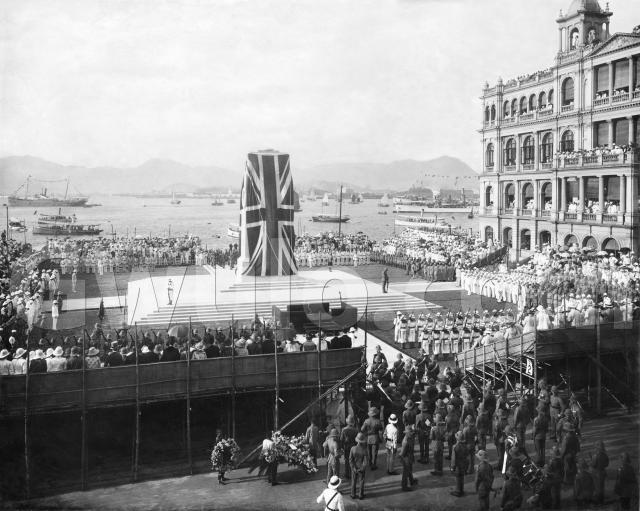
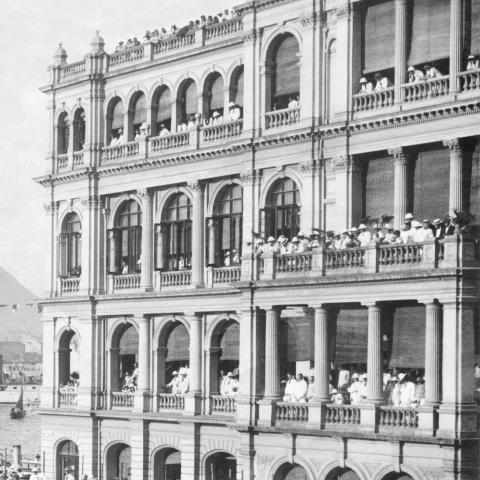
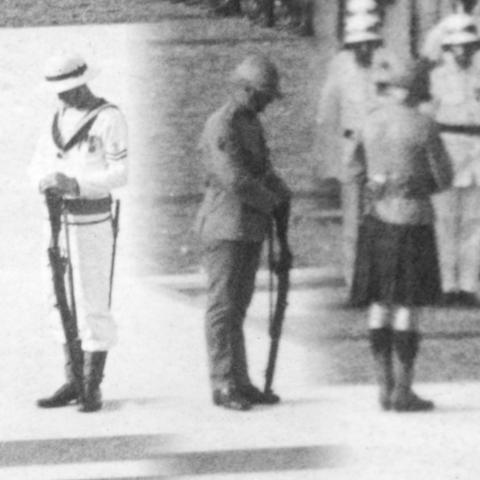
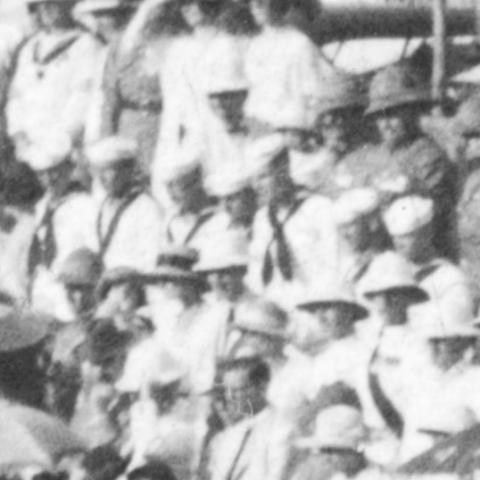


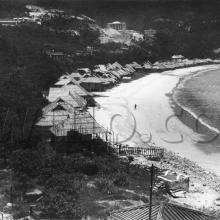
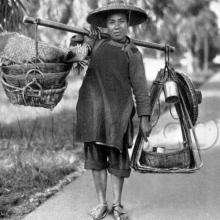

Comments
Re: cenotaph
Hard to pinpoint the Governor in the crowd.
Re: Pin-point the Governor
Hi there,
I guess if he is in the photo it should be an easy pick. In such an occasion he should have been wearing his dress uniform with its feather in his hat.
Best Regards,
T
Re: Pinpoint the Governor
The book "Excellency - The Governors of Hong Kong" on pg 150-151 has a photo of the same scene with the fourth soldier on the north-western corner in place at the base of the cenotaph and Governor Stubbs in a dark suit on the dais addressing the assembled guests and dignitaries.
Another angle on the
Another angle on the unveiling of the cenotaph
http://gwulo.com/node/19694
The view from the Hong Kong Club
Before unveiling:
And after:
Unveiling of the Hong Kong Cenotaph
I’m struck by the date of the unveiling of the Cenotaph, in that my grandfather, Charles Warren, who would have desperately wanted to attend, died of pneumonia sixteen days afterwards, aged only 51. Apart from the importance of this historic event, he would have had a professional interest in the manufacture and design of the Cenotaph, “a finer one than is possible in Whitehall”, (according to the Daily Press), since his company had specialised in monumental masonry since the beginning of the century and was the first to obtain machinery that could cut the brittle local granite. The Hong Kong Telegraph of 25 May also records that the granite Cenotaph “was erected by the Community”. Is there any record of where it was manufactured and by whom? Although a replica of the Lutyens Cenotaph, it seems not to have been transported from England.
Among the messages recorded by those who had lost relatives, I notice one from Mr and Mrs S. Deacon about the loss of “four dear brothers.” Presumably this is Mr and Mrs Stuart Deacon about whom there is a query at https://gwulo.com/node/35525
re: Unveiling of the Hong Kong Cenotaph
I haven't seen details of how the Cenotaph was built. It'd be worth looking at the newspapers in the years before the unveiling, as often when a scheme was first announced they'd report details of who was going to do the work. The Annual Reports of the Public Works Department for, say 1920-1923, would be another place to look.
Searching for "War Memorial" in the newspapers
If there's a quick way of searching for a name or a term in the newspapers I'd be grateful to know about it. I'm sure there must be. As to the PWD reports, here is what we have in 1922:
"In the early part of the year a large Pavilion was erected on the site to the West of the Hong Kong Club. This structure served temporarily as a reception hall during the visit of HRH the Prince of Wales, and was demolished immediately after the Royal Visit. On the same site the erection of a permanent War Memorial is now in progress".
In the 1923 report under the title Principal Works of a Private Nature it is simply stated:
"The Cenotaph opposite the Hong Kong Club was completed".
If there had been a private collection within the community to finance the Memorial, that surely would have been announced. The Daily Press article mentions a War Memorial Committee. The War Memorial Nursing Home does seem to have come out of the public purse.
re: Searching for "War Memorial" in the newspapers
I've just posted a short video on how I do this in case it helps: https://gwulo.com/node/36666